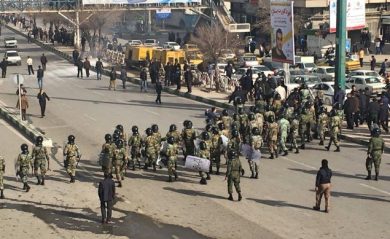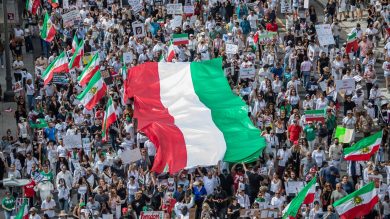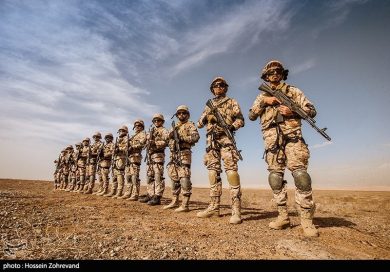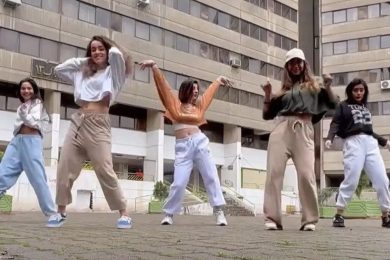The Islamic Revolutionary Guard Corps (IRGC) in Iran has become infamous for its role in repressing political dissent, particularly targeting women. Iranian prisons, especially those controlled by or associated with the IRGC, are sites of systematic abuse, intimidation, and silencing of female activists, journalists, students, and human rights defenders. These women are not only imprisoned for speaking out—they are subjected to psychological torture, solitary confinement, and often inhumane conditions intended to break their spirits.
This resource examines what life is like for women imprisoned under the IRGC’s authority, highlighting key cases, prison conditions, legal abuses, and the mechanisms used to enforce silence and fear.
1. The IRGC’s Role in Repressing Women
The IRGC is not just a military entity. It also serves as the regime’s main tool for political and ideological enforcement. The IRGC’s Intelligence Organization operates parallel to the Ministry of Intelligence and has been responsible for:
• Arbitrary arrests of women activists and protesters.
• Interrogations and forced confessions.
• Surveillance, censorship, and targeting of digital dissent.
• Control or oversight of notorious detention centers and prisons.
Key prisons controlled or influenced by the IRGC:
• Evin Prison (Tehran) – Known for housing political prisoners, especially activists, journalists, and students.
• Qarchak Prison (Varamin) – Infamous for its unsanitary conditions and mixing of political prisoners with violent criminals.
• Sepah Intelligence Facilities – Secret detention centers run by the IRGC’s Intelligence Unit.
2. Who Are These Women?
Iranian women imprisoned under the IRGC’s regime come from various backgrounds but are united by their activism and resistance. They include:
• Human rights defenders (e.g., Narges Mohammadi)
• Lawyers (e.g., Nasrin Sotoudeh)
• Journalists (e.g., Niloofar Hamedi and Elaheh Mohammadi)
• Students and educators
• Women protesting the mandatory hijab
• Labor rights activists (e.g., Sepideh Gholian)
These women are often charged with vague accusations like “propaganda against the state,” “collaborating with hostile governments,” or “disturbing public order.”
3. Conditions Inside the Prisons
A. Evin Prison
Evin is notorious for housing political prisoners. The IRGC’s Intelligence Unit operates wings inside Evin and subjects detainees to:
• Prolonged solitary confinement (sometimes for months).
• Physical torture and beatings during interrogations.
• Denial of medical care, legal access, and family contact.
• Psychological pressure, including threats to loved ones.
The prison is equipped with surveillance technology and controlled visitation designed to break down inmates’ resistance.
B. Qarchak Prison
Qarchak, specifically used to punish female political prisoners, is:
• Overcrowded and lacking in hygiene.
• Full of physical and psychological abuse.
• Dangerous due to the intentional mixing of political prisoners with dangerous criminals.
• Lacking adequate access to clean water, food, and medicine.
Many women suffer illness, injuries, and trauma in Qarchak, which has been condemned by international human rights groups.
4. Interrogations and Forced Confessions
The IRGC frequently uses psychological and physical torture to force false confessions. Common methods include:
• Sleep deprivation
• Blindfolded interrogations
• Threats of rape or harm to family members
• Forcing detainees to confess on camera for state TV
These confessions are used as propaganda to discredit dissidents and justify long prison sentences.
5. Legal Violations
Due process is rarely followed in cases involving women arrested by the IRGC. Violations include:
• Denial of access to a lawyer during interrogations
• Secret or closed-door trials
• Use of forced confessions as primary evidence
• Sentences issued by Revolutionary Courts without clear legal basis
These legal abuses are systematic and deeply embedded in the IRGC’s repression strategy.
6. Impact on Families and Children
Imprisoned women often leave behind families who are also targeted:
• Children grow up without mothers or are also harassed.
• Husbands and siblings are sometimes arrested to pressure detainees.
• Families are barred from visiting or speaking publicly about the detainees.
7. Stories That Must Be Heard
Narges Mohammadi
A leading voice in Iran’s human rights movement, she has spent over a decade in and out of prison. Incarcerated in Evin, Mohammadi has documented abuse, led hunger strikes, and continued her activism from behind bars.
Nasrin Sotoudeh
One of Iran’s most renowned human rights lawyers, she has represented women arrested for removing their hijabs. She has endured long sentences, solitary confinement, and ill treatment in both Evin and Qarchak.
Sepideh Gholian
Arrested for covering labor protests, Gholian has been transferred repeatedly between Evin and Qarchak. She has publicly spoken out after her release about the torture and humiliation she endured.
8. The Role of the International Community
What Can Be Done?
• Demand the release of all political prisoners, especially women detained for peaceful activism.
• Sanction IRGC commanders and prison officials responsible for human rights abuses.
• Support international legal action against those perpetrating torture and unjust imprisonment.
• Provide platforms to amplify voices of former prisoners and their families.
• Pressure tech companies and media to counter the IRGC’s disinformation and censorship.
Organizations to Support:
• Amnesty International
• Human Rights Watch
• Center for Human Rights in Iran
• United Nations Special Rapporteurs
9. Why This Matters
The abuse of women in Iranian prisons isn’t just a domestic issue—it’s a violation of international human rights laws. The IRGC’s role in targeting women for their beliefs, journalism, or peaceful protests reveals the depth of gender-based repression in Iran. By documenting and sharing their stories, we challenge the regime’s narrative and affirm that the world is watching.
Conclusion
Iranian women behind bars are not just prisoners—they are symbols of courage, resistance, and the demand for justice. The IRGC may control their bodies, but not their spirits. Their stories must be told, their names remembered, and their freedom fought for—until every woman imprisoned for demanding dignity walks free.
Join Our Newsletter!
Stay informed with the latest updates, news, and ways to take action in the fight for justice and global security. Sign up now to get updates delivered straight to your inbox!





